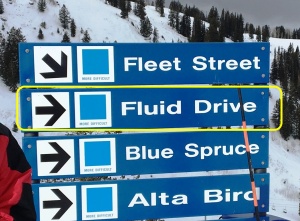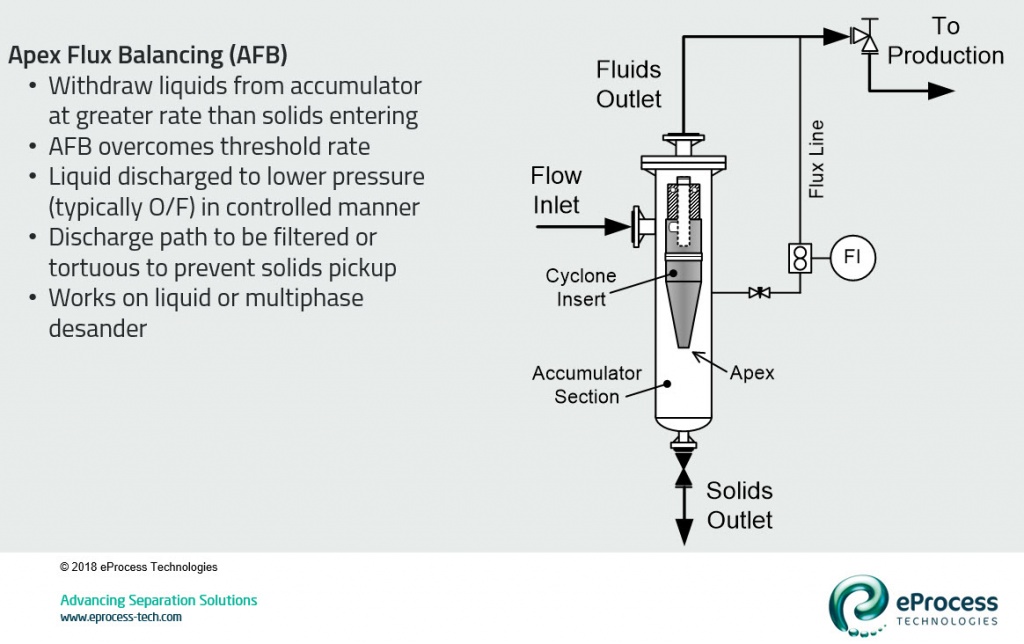Liquid Desander – Apex Flux Balancing (B-FSM069)

So what can you do if the amount of solids in your process stream exceeds the operating limit of the desander? We know how to calculate this limit and that if you exceed the amount of solids the desander will choke and plug, leading to degraded separation efficiency and early erosive failure of the desander liner/insert.
The answer lies in a few posts back (B-FSM-066) where we looked at fluid-particle swapping. As the sand particle drops from the cyclone through the apex it displaces an equivalent volume of liquid back up through the apex. This volume swap is what leads to the apex choking. However, if the liquid could be extracted from the accumulator section other than back through the apex then no choking would occur.
The simplest configuration is to open the accumulator discharge valve (all or some). This allows liquid to exit the bottom of the accumulator, thus negating choking from volume swap. Operating in this manner however has issues of continuous liquid loss (and subsequent handling) and erosion on the discharge valve. For low pressure operation (<100 psig at the inlet) this method of operation is often used. However, for high pressure operation (>100 psig), or multiphase flow with oil in the fluid stream, or very abrasive solids, or problems with handling large volumes of discharged liquids – cracking open the discharge valve is not a reasonable solution.
The Apex Flux Balance (AFB) line was thus introduced as a reasonable solution to be added to the desander system. A small line (typically tubing, not piping) is connected from the top of the accumulator section to a lower-pressure point in the process (I recommend the desander overflow line). The amount of liquid required (typically 1-3 liters/min at most) is withdrawn from the accumulator to let the solids fall without hindrance. The AFB line can be very simple (1/2” tubing with on/off valve) or more elaborately controlled (using metering valve or flow rate indicator).
The most important part of this line is that it is placed to prevent solids pick-up and re-entrainment. The graphic below shows connection of the AFB line to a insert-style desander, such as used in multiphase flow or for jetting slurry-treating. The line is taken off the desander vessel above the apex of the insert, thus creating a tortuous path that prevents solids pick-up. Connecting the AFB line to the secondary accumulator is an option, however, is more difficult to prevent solids pick-up. The line needs to have a filter or baffle with tortuous path to prevent solids carry through.

The AFB line is not meant to be a panacea in allowing all desanders to work in all situations. I still do NOT recommend suing multi-liner desanders to treat jetting slurry – treating that concentrated of a slurry should use a larger diameter insert desander. The AFB line however will overcome some operational difficulties in allowing a desander to operate through a wider range of slurry concentrations.
The next article will discuss erosion and wear life in desanders.
References:
- Rawlins, C.H., “Particle Transfer Between the Cyclone and Accumulator Sections of a Desander”, SPE Production & Operations, paper SPE-191147-PA, 2018.
